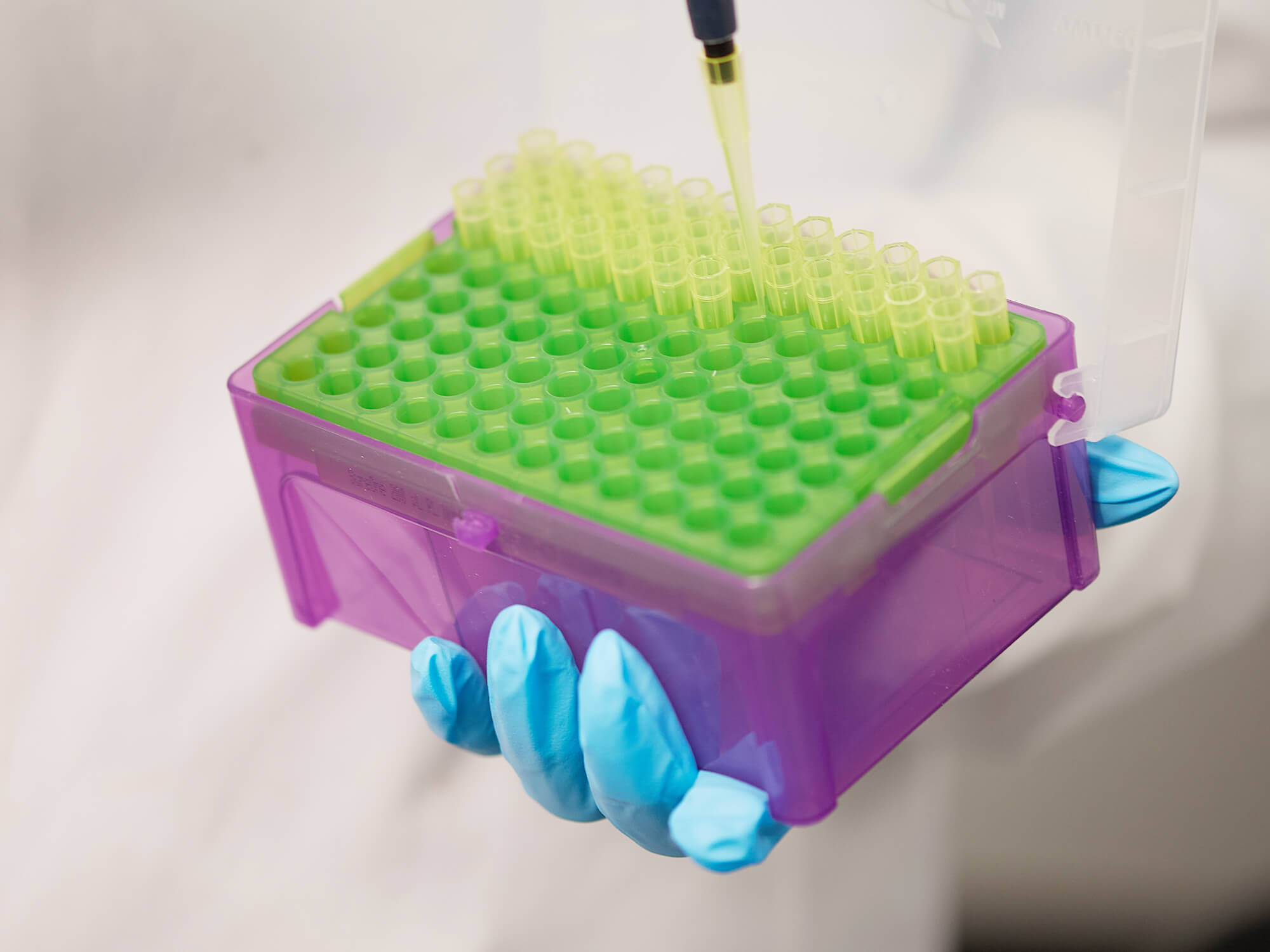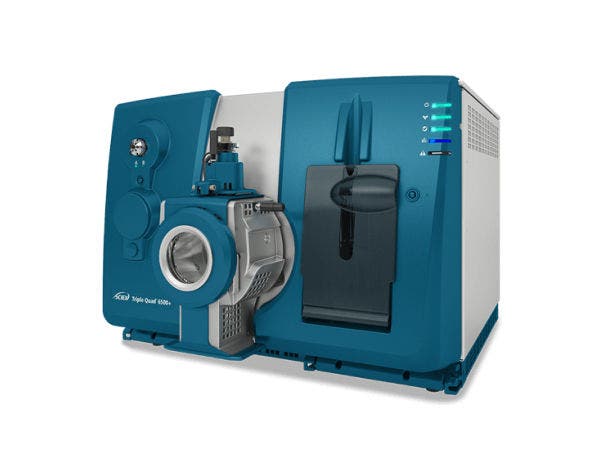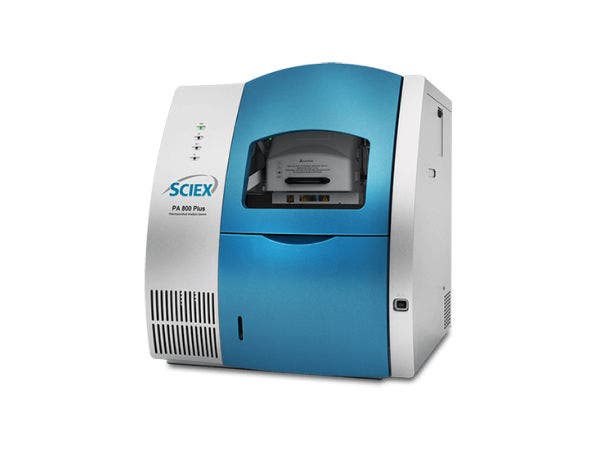Alternative protein testing is fundamental to the research and development of novel foods, which include those derived from cellular agriculture, precision fermentation and plant- and insect-based products. Drawing on our extensive expertise in life sciences and food testing, we deliver cutting-edge technology to advance your alternative protein R&D.
Alternative proteins testing

Explore the latest and trending topics
Taste plays a crucial role in consumer acceptance of alternative protein products. In this study, potential umami peptides were identified using collision-induced dissociation (CID) and electron-activated dissociation (EAD) MS/MS fragmentation techniques. These findings are pivotal for developing savory flavors in various food products, enhancing their appeal and market viability.
Watch this on-demand webinar to hear from Dr Lin Qingsong, Principal Research Fellow, Director, Protein and Proteomics Centre, National University of Singapore and be informed about up-to-date risk assessment considerations of alternative proteins.
Testing tomorrow's proteins today
Developing alternative protein products with high-value nutritional profiles, that are also safe for consumption, starts with the right equipment.
High-resolution mass spectrometry (HRMS) is used for proteomics and metabolomics approaches to understand changes in prototype cell-lines or cell culture media. Post-translational modifications and changes in protein expression have been highlighted as new allergen risks and HRMS is used for discovery proteomics to look for new proteolytic peptides as markers for allergenic proteins. HRMS can also be used to look for unwanted secondary metabolites from cell-lines in bioreactors as well as extractables and leachables and potentially harmful residues.
Nominal mass spectrometry is commonly used for lipidomics approaches, targeted screening of cell culture media components in production as well as allergen testing and residue testing. Plant-based foods can contain a variety of natural toxins as well as pesticides. Cell-cultured foods may contain processing contaminants, growth factors, veterinary drugs and more. SCIEX technology can answer a multitude of questions that arise from product development with alternative proteins.
Metabolomics: Designed with non-statisticians in mind and intuitively developed, MarkerView software distills complex datasets quickly.
Cell culture media analysis (CCMA): SCIEX CCMA methods by triple quadrupole and high resolution QTOF systems offer high sensitivity, selectivity, and robustness for the identification and quantification of over 110 compounds.
Lipidomics: SelexION technology can be used to greatly reduce isobaric interferences in lipid analyses. It uses a discrete, lipid class-specific compensation voltage (CoV) to filter ions into the mass spectrometer and prevents precursor lipid isobars from contributing to MS/MS spectra. This results in unparalleled selectivity, a general reduction in noise.

Non-targeted metabolomics
Non-targeted metabolomics seeks to identify metabolites and turn them into biological answers. SCIEX solutions focus on generating comprehensive datasets containing large amounts of information through unique approaches such as data-independent acquisition (DIA) using SWATH DIA or alternative fragmentation using electron-activated dissociation (EAD). Discover methodologies and solutions for identifying new and unknown metabolites and comparatively quantifying across complex samples and matrices:
- Explore the metabolome with high sensitivity, expanding metabolite coverage
- Enable fast, accurate identification and quantitation using sensitive, robust and reproducible technologies
- Perform large-scale experiments with powerful, high-throughput workflows and solutions
- Enable comprehensive target characterization and structural elucidation with election associated dissociation (EAD) technology

Resources for Non-targeted metabolomics in alternative protein testing
The SCIEX ZenoTOF 7600+ system is a Zeno trap-enabled QTOF engineered with the added specificity of the scanning quadrupole dimension to enhance speed, depth and certainty in quantitative measurements.
Designed with non-statisticians in mind and intuitively developed, MarkerView software does the heavy lifting so you can focus on high-value decisions like reviewing trends and differences in targeted or untargeted mass spec workflows. Distill complex datasets quickly, find statistically significant differences and reveal key insights faster. MarkerView software is now integrated into the SCIEX OS ecosystem.
Delivering the perfect balance of speed, performance, and sensitivity for your most challenges analytes.
Characterize therapeutic molecules with confidence with the kit-based system.
Unlocking Food Quality and Safety with Discovery Proteomics
Mass spectrometry (MS)-based discovery proteomics is increasingly being adopted in food and beverage testing as a powerful tool for comprehensive, untargeted protein profiling. Leveraging high-resolution LC-MS/MS platforms, this approach enables the identification and relative quantification of thousands of proteins in complex food matrices without prior knowledge of the proteome.
In food safety and quality control, discovery proteomics facilitates:
- Allergen detection and characterization beyond conventional ELISA or PCR-based methods, enabling identification of isoforms and post-translational modifications (PTMs) that may influence allergenicity.
- Authentication and traceability of food products by generating protein fingerprints that distinguish between species, geographic origin, or production methods (e.g., grass-fed vs. grain-fed beef).
- Detection of adulterants and contaminants, including undeclared proteins from other species or processing residues.
- Monitoring of fermentation and spoilage processes, particularly in beverages like wine, beer, and kombucha, by profiling microbial proteomes and metabolic enzymes.
- Assessment of processing effects such as heat-induced protein denaturation, Maillard reaction products, and proteolytic degradation.
By enabling hypothesis-free exploration of the proteome, discovery proteomics supports the development of targeted assays, biomarker discovery, and systems-level understanding of food composition and transformation. When integrated with bioinformatics pipelines and spectral libraries, this approach enhances reproducibility and regulatory compliance in food testing workflows.
The newest accurate mass platform with sensitivity levels up to 10x greater than existing SCIEX technology. This translates not only into the lower limits of quantitation but also into new enabled approaches to making biologically relevant discoveries that can be proved by the data.
The SCIEX ZenoTOF 7600+ system is a Zeno trap-enabled QTOF engineered with the added specificity of the scanning quadrupole dimension to enhance speed, depth and certainty in quantitative measurements.
Designed with non-statisticians in mind and intuitively developed, MarkerView software does the heavy lifting so you can focus on high-value decisions like reviewing trends and differences in targeted or untargeted mass spec workflows. Distill complex datasets quickly, find statistically significant differences and reveal key insights faster. MarkerView software is now integrated into the SCIEX OS ecosystem.
Precision Protein Quantification in Food Testing with Targeted Proteomics
Targeted proteomics, powered by mass spectrometry (MS), is a robust and highly specific approach for the quantitative analysis of predefined proteins and peptides in complex food and beverage matrices. Utilizing techniques such as Selected Reaction Monitoring (SRM), Multiple Reaction Monitoring (MRM), and Parallel Reaction Monitoring (PRM), this method enables reproducible, high-throughput quantification with excellent sensitivity and selectivity.
In food and beverage testing, targeted proteomics is widely applied for:
- Quantitative allergen detection: Enables precise measurement of trace-level allergenic proteins (e.g., casein, gluten, peanut proteins) with greater specificity than immunoassays, even in thermally processed or hydrolyzed products.
- Verification of food authenticity: Confirms species identity in meat, fish, and dairy products by targeting species-specific peptide markers, supporting efforts to combat food fraud and mislabeling.
- Monitoring of fermentation and bioprocessing: Tracks key enzymes and microbial proteins involved in fermentation (e.g., in beer, wine, yogurt), providing insights into process consistency and product quality.
- Assessment of protein degradation and modification: Quantifies proteolytic fragments or PTMs (e.g., oxidation, glycation) that arise during storage, processing, or spoilage.
- Compliance with regulatory thresholds: Supports quantitative reporting of contaminants or allergens in accordance with global food safety standards (e.g., EU, FDA, Codex).
By leveraging stable isotope-labeled internal standards and optimized LC-MS/MS workflows, targeted proteomics delivers high-confidence quantitation with minimal matrix interference. This makes it an indispensable tool for routine food testing laboratories, R&D groups, and regulatory agencies seeking to ensure product integrity, safety, and traceability.

Example publications
The newest accurate mass platform with sensitivity levels up to 10x greater than existing SCIEX technology. This translates not only into the lower limits of quantitation but also into new enabled approaches to making biologically relevant discoveries that can be proved by the data.
The SCIEX ZenoTOF 7600+ system is a Zeno trap-enabled QTOF engineered with the added specificity of the scanning quadrupole dimension to enhance speed, depth and certainty in quantitative measurements.
Designed with non-statisticians in mind and intuitively developed, MarkerView software does the heavy lifting so you can focus on high-value decisions like reviewing trends and differences in targeted or untargeted mass spec workflows. Distill complex datasets quickly, find statistically significant differences and reveal key insights faster. MarkerView software is now integrated into the SCIEX OS ecosystem.
Interdisciplinary applications suitable for alternative protein testing
-
Technical note
Enhanced sensitivity for cell culture media analysis (CCMA)
On average, 4-fold improvement in S/N was observed when compared to the SCIEX Triple Quad™ 6500+ LC-MS/MS System for compounds in all major CCM classes including amino acids, carbohydrates, vitamins, fatty acids, and nucleic acids.
-
Technical note
Targeted quantitation of milk and egg allergens in vegan foods
This technical note demonstrates a sample preparation and LC-MS/MS method for the determination of milk and egg allergens in vegan and conventional foods.
-
Poster
Quantitative LC-MS Solution for Targeted Analysis of Cell Culture Media
As a proof of concept, the Gibco cell culture (CD CHO) medium was analyzed using this CCM method.
-
Technical note
Detection of sesame peptides and 12 other food allergens using the SCIEX vMethod for food allergen testing
The vMethod received First Action Official Method (FAOM) classification from AOAC International for LC-MS/MS-based allergen screening and was updated according to recent regulations to include sesame.
-
Technical note
Quantitative Amino Acid Analysis in Cell Culture Media Using SWATH® Acquisition
A reliable quantification workflow for amino acid analysis in cell media, by coupling the HILIC separation with the SWATH Acquisition
-
Technical note
A comprehensive method for in-depth profiling of secreted metabolites in cell culture media from human adipose stem cells
Achieve sensitive profiling of over 110 cell culture metabolites in under a 20 min run time.
-
Webinar
Allergen Detection and Authenticity Testing of Food using Targeted Proteomics and MRM3
Learn from Jens Brockmeyer, University of Stuttgart, Analytical Food Chemistry.
-
Technical note
Quantification of Whey Protein Content in Infant Formula by CE-SDS
In collaboration with Wyatt Nutrition (China). This method was approved by the AOAC Expert Review Panel for Stakeholder Panel on Infant Formula and Adult Nutritionals (SPIFAN).
-
Technical note
Development of a targeted LC-MS/MS method for the detection of microbial Transglutaminase from Streptomyces mobaraensis
Transglutaminase can be used to cross-link smaller pieces of any type of meat, fish, or meat product, to produce large, virtually intact sections. This has raised several food safety concerns. Specifically, the transglutaminase enzyme is the target antigen of antibodies found in the serum of patients suffering from coeliac disease.
-
Technical note
Quantitative and Qualitative Analysis of Cell Culture Medium Using SWATH® Acquisition
Wide analyte coverage by quantifying and confirming every ESI MS detectable compound in the medium.
-
Technical note
Simultaneous determination of 88 veterinary drug residues in pork liver using LC-MS/MS
Certain veterinary drugs are a concern not only for traditional foods of animal origin, but also for food produced in bioreactors. Antibiotics for example. This method describes the analysis in animal tissue.
-
Technical note
Quantitation of per- and polyfluoroalkyl substances (PFAS) in foodstuffs
PFAS are known to bind to proteins. It is therefore likely that alternative protein products contain PFAS just as their traditional counterparts. Here, a method is presented for traditional foods like eggs and pork. Application of this method resulted in excellent agreement with the previously measured reference levels.
-
Technical note
Analysis of veterinary drugs, pesticides and mycotoxins using a single method on the SCIEX 7500 system
A combined method for the most common food residues in food safety testing.
-
Technical note
Advancing coffee plant metabolomics: A comparative QTOF study
Superior metabolite coverage: In all the data processing methods employed, the ZenoTOF 7600 system provided additional insights into the samples analyzed compared to the QTOF A system.
-
Technical note
Citrus metabolomics with the ZenoTOF 7600 system
Zeno trap offers improvement in MS/MS sensitivity and ion duty cycle, allowing for greater efficiency and confidence in identifying low-level or even previously undetected compounds in complex matrices.
-
Technical note
Quantitative lipid analysis using MRM and differential ion mobility spectrometry (DMS)
Quantitative analysis of lipid extracts is particularly challenging owing to the extensive isobaric overlap present in the lipidome - discover the solution.







